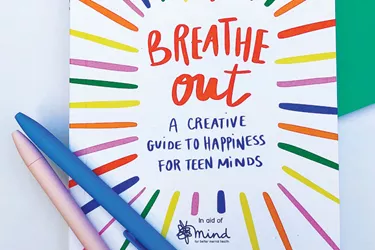Mindfulness and the art of tea
Shalini blogs for us about mindfulness and the art of tea, as part of our Happy Monday campaign.
A good friend of mine gave me a Mind Christmas card last year and it was so poignant for so many reasons.
On the front of it was a recipe for “Warming Christmas Tea”. Reading it, I was interested to see that it was so similar to the Masala Tea (translated as Spicy Tea) I used to drink as a child – and that I also turned to during the time that I suffered from depression.
Ten years ago I was diagnosed with clinical depression brought about by a stressful job and an extremely difficult family situation. Within days of seeing my GP, being diagnosed and then a consultant, I was hospitalised.
Depression is all consuming. I literally felt like I was walking in a fuzzy, grey haze – all the time. Even the smallest, most basic daily tasks were a huge effort. Brushing my teeth, having a shower, getting dressed – were all exhausting. I couldn’t eat, I couldn’t sleep, I couldn’t concentrate on anything. Basically, I had lost the taste for life.
The healing process was slow and painful. And there was no one thing that I can say made a difference – it was many things. The love and understanding of my partner, the hours of painful therapy, the pills that made me function during the day, and those that gave me respite at night by allowing me to sleep.
But whilst recovering – I rediscovered my love for making and drinking Masala Tea.
I have always had such a strong bond to tea. I was born in Kenya – a great tea-growing nation. My heritage is from India – a great tea drinking nation. My home now is the UK – a nation obsessed with tea!
Apparently the British have been drinking tea since the 17th century. It is the British who introduced it to India in the 1830s and Kenya in the early 1900s.
What you need to make Masala Tea:
- Black tea leaves
- Sweetener of some sort – in this case I’m using sugar
- Milk and
- Spices
There is no fixed recipe and ingredients vary from family to family. Different regions of India have a slightly unique way of making their Masala Tea – but typically the masala or spices will consist of green cardamom, cinnamon, cloves, black pepper and ginger. Today you can also buy ready made chai masala.
I like to use ginger which is native to Southeast Asia and comes from the rhizome of the ginger plant. I always have ginger tea when I’ve got a cold – but it is well known as a stomach soother, helping to reduce nausea and digestive complaints. I also use cardamom - the third most expensive spice after saffron and vanilla. According to Ayurvedic practice, cardamom can help improve digestion – and can help ease stomach cramps.
The ritual of making this tea gave me something simple, yet rewarding to focus on during the days of my depression. And today, I still retain this ritual of tea making.
As I watch the water boil with the black tea leaves – the smell of ginger and cardamom gets stronger. Adding the milk gives it a frothy, milky look – and I let this bubble up in the saucepan.
When the tea is ready, I pour it through a sieve into a mug that has already been warmed by hot water. The tea looks milky, yet strong – inviting me to drink it. As I hold the mug – I can feel the comforting warmth of the Masala Chai in my hands. The spicy, fragrance of the spices is both invigorating and relaxing at the same time. And the taste is refreshing, yet comforting.
As I drink this cup of Masala Tea – I am mindful of the look, the feel, the smell and the taste of it. It evokes images of childhood, comfort and home.
Shalini’s Masala Tea Recipe - how to make the perfect cup
- Water – 1.5 cup
- Milk – 1 cup
- Ginger – 1 inch - crushed
- Green Cardamom – 3 - crushed
- Sugar – 1 teaspoon (or to taste)
- Tea leaves – 2-3 teaspoons?
Preparation method
- Boil water in non-stick saucepan
- Add crushed/grated ginger
- Add crushed cardamoms
- Bring to a boil – rolling boil
- Add tea leaves
- Bring to a boil
- Add milk
- Bring to a boil
- Add sugar
- Bring to a boil
Take off the heat – strain into teacups and serve.


Information and support
When you’re living with a mental health problem, or supporting someone who is, having access to the right information - about a condition, treatment options, or practical issues - is vital. Visit our information pages to find out more.
Share your story with others
Blogs and stories can show that people with mental health problems are cared about, understood and listened to. We can use it to challenge the status quo and change attitudes.

















